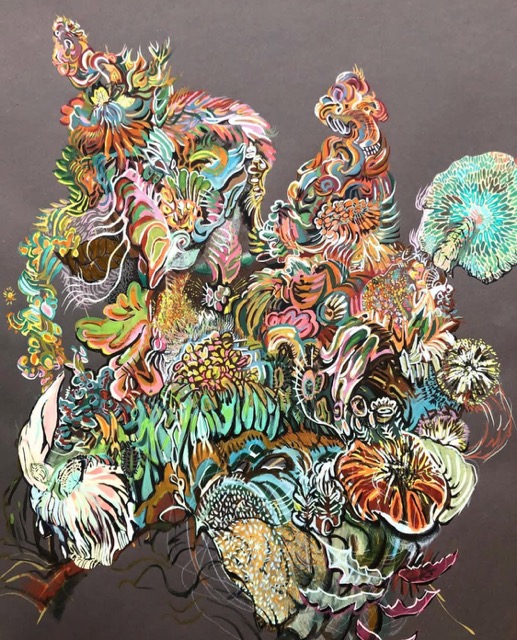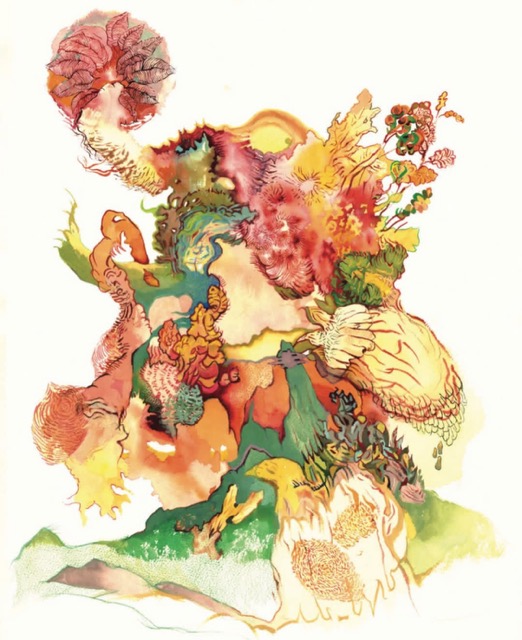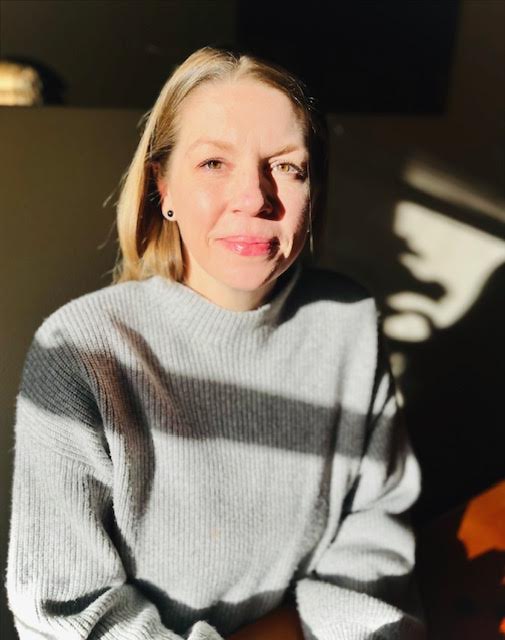We recently connected with Chandler Woodfin and have shared our conversation below.
Chandler, looking forward to hearing all of your stories today. Learning the craft is often a unique journey from every creative – we’d love to hear about your journey and if knowing what you know now, you would have done anything differently to speed up the learning process.
I always think of the 10,000 hours to mastery rule. Whether or not this is real, there was definitely a time when the shift came from ‘I am learning to paint’ to ‘I am painting’. But then, of course, the learning never stops. And I believe like many others that the skill becomes more about how to open your ‘self’ up to the thing that is painting. It is a tangible energy of something working through you, revealing itself as you move- an uncovering, a revealing. If someone had told me that when I started, I would have no idea what they meant. Maybe they did tell me, and I didn’t hear it.
I received a BFA in painting, but it was an atelier experience that put me on my current path. It was the 60 hours a week in the studio, drawing from life, studying the human form and all other forms as much as possible. It is the unrelenting study of organic forms in space, depth and color and composition, that allow abstraction to take place. Without knowing the rules, you don’t know how to break them, how to capture tension, isolation, joy, fluidity, movement. I studied what resonated with me, the legacy of painting that I understood and craved to be a part of. Most of this continues to be ancient Chinese works, but also German Expressionists and children’s books and cartoons. I would tell my younger self not to waste time arguing with the hyper-realists. That working toward uncovering your own meaning is yours alone, and that real painting happens when you are alone. That is when the void reveals itself, and that is all that matters in the work.

Chandler, before we move on to more of these sorts of questions, can you take some time to bring our readers up to speed on you and what you do?
I am a painter. I show up for it every day as a practice that I respect and honor. I work a full-time job, with a salary and benefits, because this helps me feel safe and manages my health issues. But this job also balances out the isolation of painting. As I said before, I believe I can only get to the core of painting, real painting, when totally alone. It is the only time I have experienced that true revealing, working like a conduit, like the image coming out is merely moving through me. I just happen to be listening and just happen to have connected my hand to my heart and mind enough to express what is already there.
I would love to paint full time, but I also have real fears that I would feel too isolated. I fill myself with human interaction, playing and laughing and problem solving, and then paint with a full and connected spirit.
I am proud of the twenty-plus years of painting, and that I continue to evolve. Experimentation is crucial, not allowing yourself to ‘paint yourself into a corner’. This is what certain folks want, gallery owners and agents, for you to act as a factory that makes the same product over and over. Doing new things is unpopular in this world, it can make your audience uncomfortable. But my job is to connect, to deepen my practice, and where it goes is by nature unpredictable. That said, stepping back and looking at my own work, there is definitely a common theme. A natural world abstracted. At some moments I feel I am painting outermost galaxies, and in other moments I feel it’s the bottom of the ocean. I’ve never seen either and maybe they are the same thing.

How can we best help foster a strong, supportive environment for artists and creatives?
I believe we can do better to support artists in helping them to have a living wage and more access to grants and funding. The grant process is tremendously competitive. Part of my own personal narrative is that I might get one out of every forty grants I apply for. It helps to keep me sane remembering that rejection is sewn into the creative’s job. But many artists don’t have experience writing or presenting to a panel or even know where to look for funding opportunities.
Funders tend to look to invest in the same arts and artists over and over again as well. The philanthropy of arts funding is flawed and needs an overhaul. The only way for this to happen is for funding partners to audit themselves and change their own practices. They will have to re-structure their giving model in many ways. I think this was starting to happen a few years ago, but I am hesitant to even go down that trail of thought in our current time. This is an unsettling time for creatives and trying to create a thriving ecosystem. We may have to figure out how to survive first.

Learning and unlearning are both critical parts of growth – can you share a story of a time when you had to unlearn a lesson?
Talent is meaningless without work ethic and enthusiasm.
I transitioned from art student to art teacher and saw throngs of people just give up when the work became uncomfortable, meaning that they would run away when asked to work outside of their skill set. While I was attending my full-time studio atelier, a student came in with zero drawing or painting skills. I was afraid for him, as he would come into the modeling sessions completely overwhelmed and leave in tears. But he showed up every single day and worked through the pain of ugly drawings and embarrassing critiques. About a year and half in, working 60-70 hours a week, he became the best draftsman in our program. I learned from him and from being a teacher, that you cannot teach enthusiasm or work ethic. And these are the skills that support everything else. Certainly some people have an aptitude for drawing or painting, but these folks are left in the dust by a hard-working artist. Artists are made, not born, and made from blood, sweat tears.
Contact Info:
- Website: https://chandler-woodfin.squarespace.com
- Instagram: chandlerwoodfin
- Facebook: Chandler Woodfin





